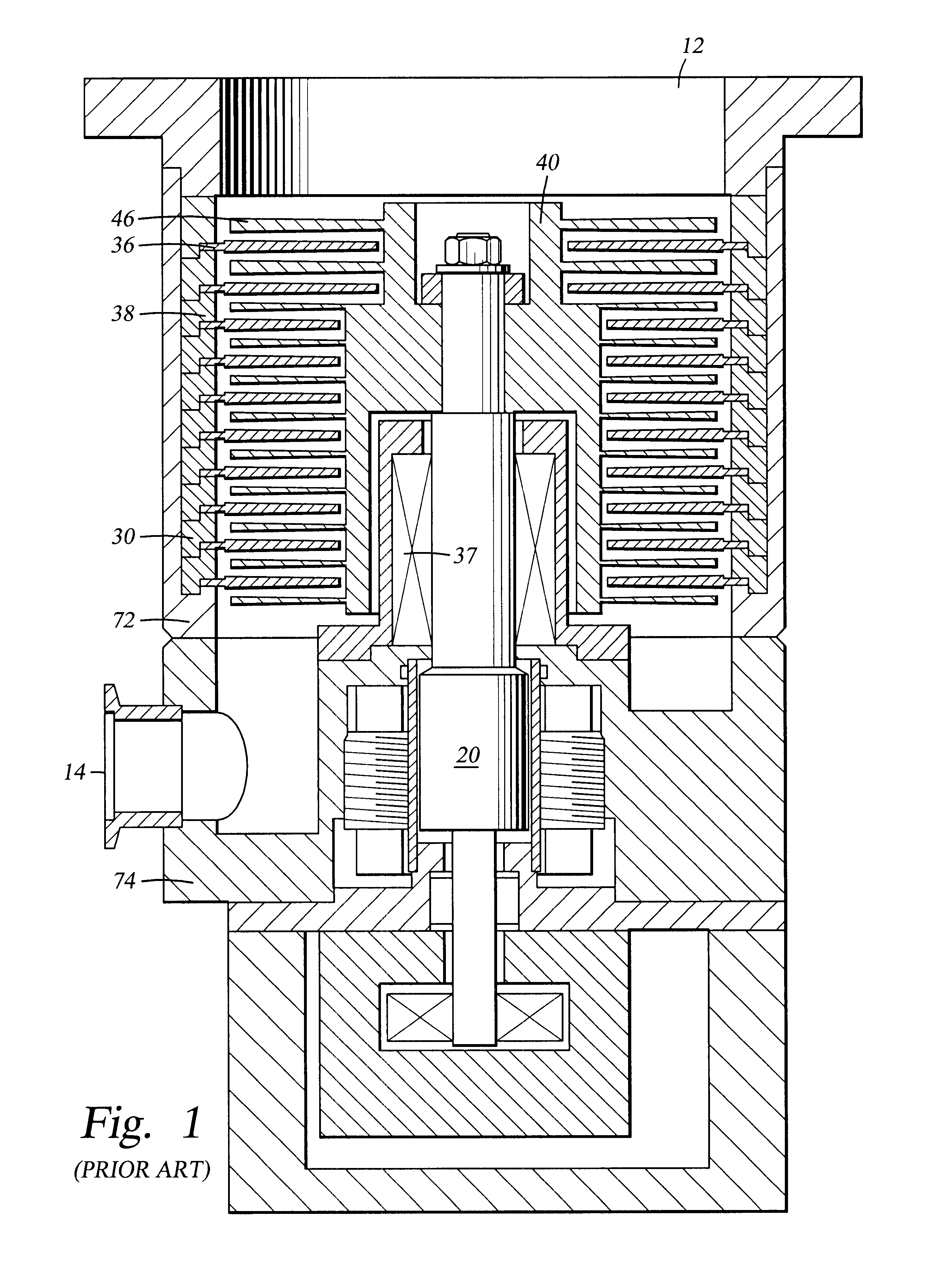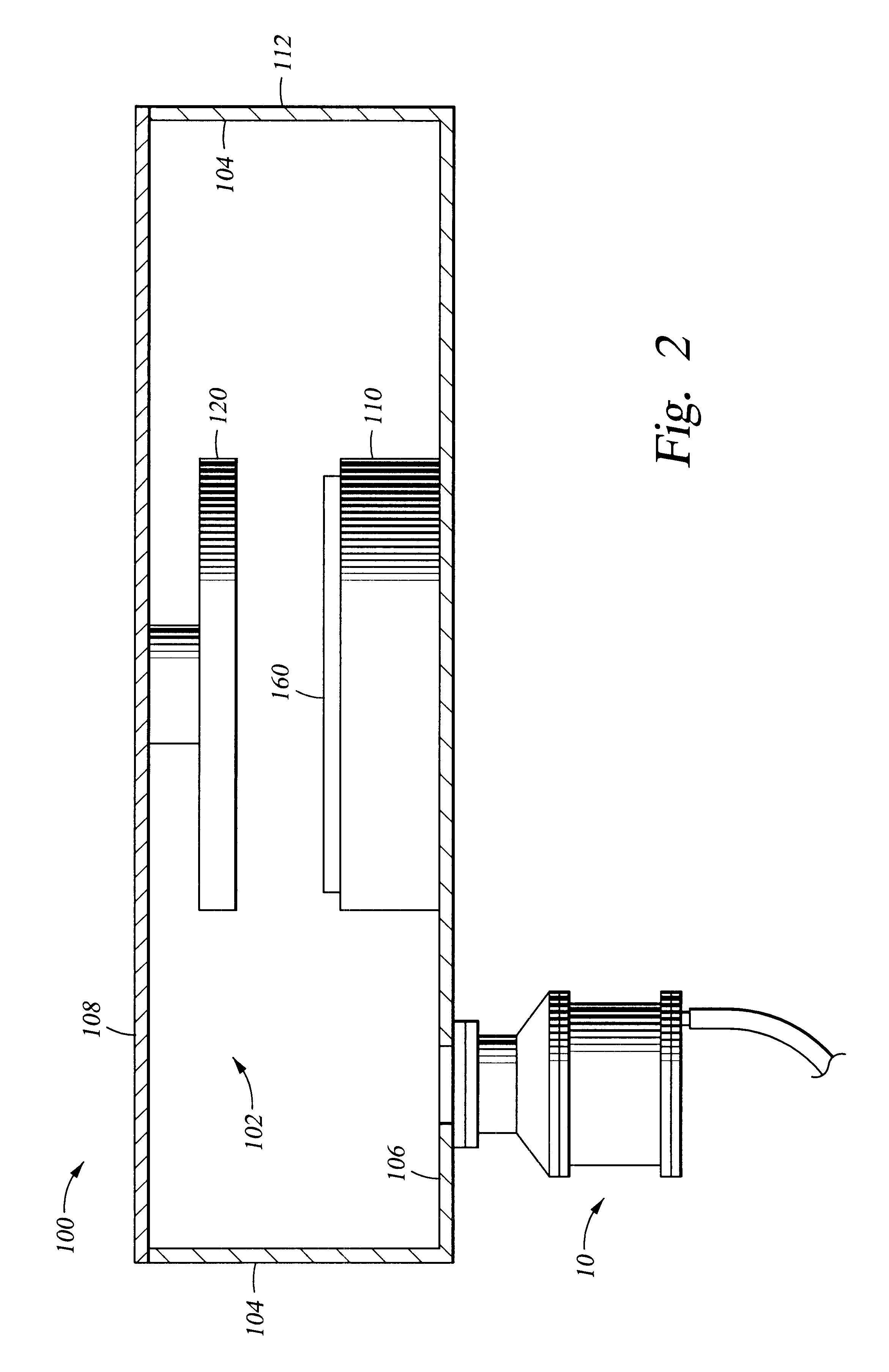Turbo-molecular pump having enhanced pumping capacity
a vacuum pump and turbomolecular technology, applied in the field of micro-molecular vacuum pumps with increased pumping capacity, can solve the problems of pump components failing, plasma-based etching and cvd processes requiring particularly high process gas flow rates and relatively shallow vacuum levels, and the cost of building and maintaining clean rooms is so high
- Summary
- Abstract
- Description
- Claims
- Application Information
AI Technical Summary
Problems solved by technology
Method used
Image
Examples
Embodiment Construction
FIG. 3 is a cross-sectional view showing one embodiment of the pump 200 of the present invention. The pump includes a stator 220 extending radially inwardly from the casing 201 and a rotor 210 disposed within the casing. A motor 248 is coaxially disposed with the rotor and rotates the rotor 210 about a shaft 225. The rotor 210 includes two outer diameters, a smaller diameter 226 adjacent an inlet 205 of the pump and a lower, larger diameter 228 extending towards an outlet 206 of the pump. In the embodiment illustrated in FIG. 3, the first two rows of rotor blades 250, or those blades extending from the smaller diameter portion 226 of the rotor 210, have an increased length as compared to the other rotor blades 225 extending from the larger diameter 228 of the rotor 225. The corresponding stator blades 251 are also increased in length extending inwards from an enlarged diameter portion 253 of the stator 220. The longer stator and rotor blades 250, 251 provide an increased surface are...
PUM
 Login to View More
Login to View More Abstract
Description
Claims
Application Information
 Login to View More
Login to View More - R&D
- Intellectual Property
- Life Sciences
- Materials
- Tech Scout
- Unparalleled Data Quality
- Higher Quality Content
- 60% Fewer Hallucinations
Browse by: Latest US Patents, China's latest patents, Technical Efficacy Thesaurus, Application Domain, Technology Topic, Popular Technical Reports.
© 2025 PatSnap. All rights reserved.Legal|Privacy policy|Modern Slavery Act Transparency Statement|Sitemap|About US| Contact US: help@patsnap.com



